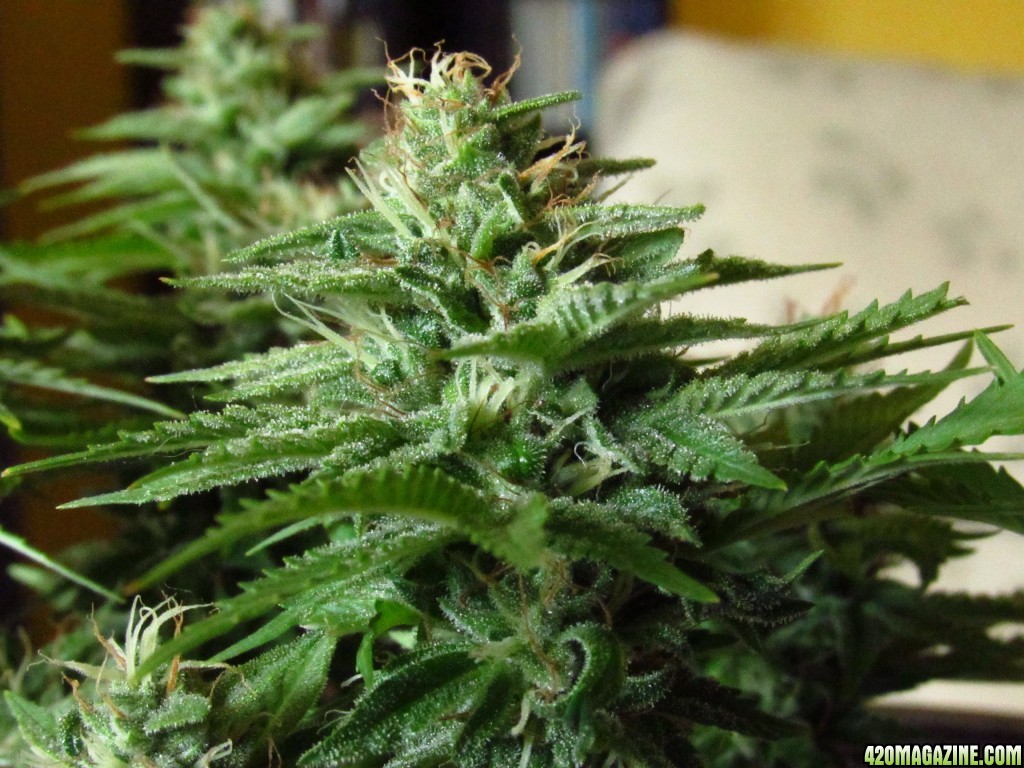flowerfarmer
Well-Known Member
I just tested two lower fan leaves on my Starbud and got a brix of 13. The first time I've ever tested brix in my life was last week.
How To Use Progressive Web App aka PWA On 420 Magazine Forum
Note: This feature may not be available in some browsers.
How do I test? What do I need? Of course I'll do it

Question for everyone. Who is testing brix levels?







Hey Doc!!
Been a while since I have been through... I have a question for ya...
So usually when I do test my brix levels, I usually test the sap at the cut I make on the stem, as well as the crushed leaf juice. To test the sap, immediately after I cut off the leaf sample, the stem forms a bubble of sap in which is what I spread onto my refractometer to test.... and with the leaf...ball it up, crush it a bunch, and then squeeze juice out with my pliers...
Now the question is this.. Usually the relationship to my sap to leaf is where the sap is a lower brix than the leaf....and this has been true every single time I have tested the plants...the sap is always lower....
Last night I tested my Ogiesel plant and the sap reading was 22 and the leaf crushed was a 16 brix..... which was the 1st reading where the sap was higher (much higher than the leaf).
Have you ever seen this? Any clue on what it could mean? I am going to check them again tonight when the lights come on at the same time to see if it was a error in data collection, but it was very interesting to say the least. Any thoughts on this?
***also, to add to this, the plants were given a compost tea about 2-3 hours previous to the readings being taken. The compost tea had very little sugars in it, other than about 20ml of carboload (5 sugars) for 5 gallons of water. I also gave the plants a foliar spray of the tea at the same time I fed the soil.
Common sense would tell me that the plant liked the compost tea feeding, ramped up production of sugars, and therefore the sap might be higher than the leaf which may have been previously producing less sugars the previous weeks? Other than that I don't know if there is a relation to sap vs crushed leaf juice, but I found it very interesting and wanted to hear your thoughts on it.
Hmm ... but the leaf is producing the sugars, so they would be traveling the other direction, no?
In my experience, when you get readings over 20 you should be suspicious. It'll be very interesting if you get similar readings again.






 The big advantage of your sap test is that no surface residue from foliars is involved. That variable has been bothering me lately, but a wash won't work because it would hydrate the leaf. But with your method, it's only the fluid.
The big advantage of your sap test is that no surface residue from foliars is involved. That variable has been bothering me lately, but a wash won't work because it would hydrate the leaf. But with your method, it's only the fluid.The big variations I've seen in my garden have been primarily due to leaf turgidity - how plump or dry they are. Dryer leaves will read a couple points higher. I've never done the sap test, and I think after reading about yours I'll probably give it a try. I haven't tested anything in weeks anyway and I should see what they have.The big advantage of your sap test is that no surface residue from foliars is involved. That variable has been bothering me lately, but a wash won't work because it would hydrate the leaf. But with your method, it's only the fluid.
Are you sure you're always getting enough fluid for a fair test? Not enough will get you a high reading ...

 always a pleasure and appreciate your insight
always a pleasure and appreciate your insight 

